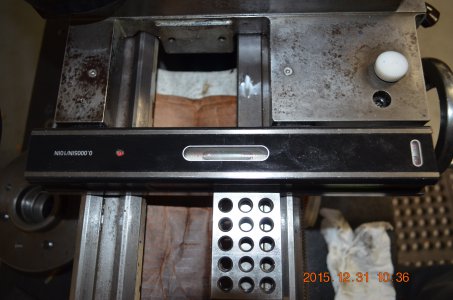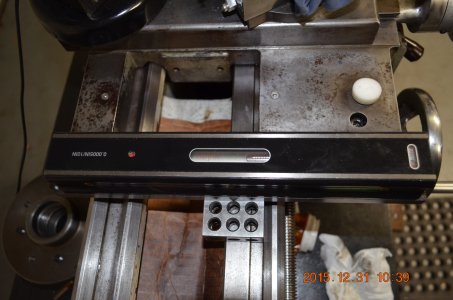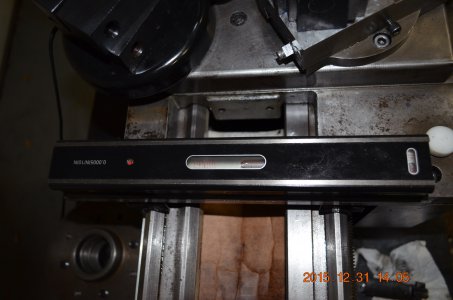- Joined
- Jul 13, 2014
- Messages
- 1,051
Getting the garage re-arranged for better access to the cramped space, had to move the smaller equipment around. In the process of leveling the lathe.
I think I know the answer, I just need to bounce if off you guys as to which way is the correct on leveling a lathe with 3 V ways. The carriage rides on the V ways and not on a V way and Flat way, I can read the level on top of the 3 V ways or read it with the level sitting on top of a 1-2-3 block. Due to the width between the double V way, even the 1 inch side will not fit, so I have to use one block only to rest the level.
This is on the 1024 lathe, on my 1236 the carriage rides on one V and on the flat.
Input?
Thank you in advance.


I think I know the answer, I just need to bounce if off you guys as to which way is the correct on leveling a lathe with 3 V ways. The carriage rides on the V ways and not on a V way and Flat way, I can read the level on top of the 3 V ways or read it with the level sitting on top of a 1-2-3 block. Due to the width between the double V way, even the 1 inch side will not fit, so I have to use one block only to rest the level.
This is on the 1024 lathe, on my 1236 the carriage rides on one V and on the flat.
Input?
Thank you in advance.




